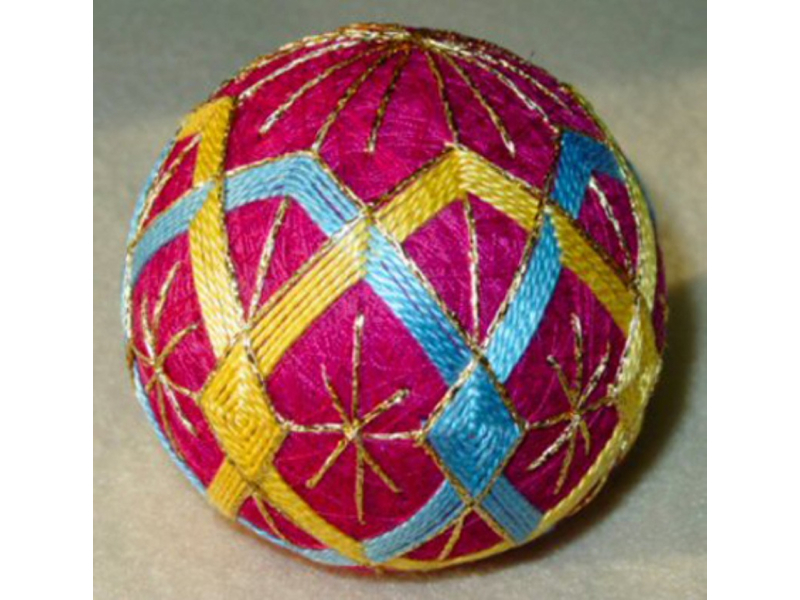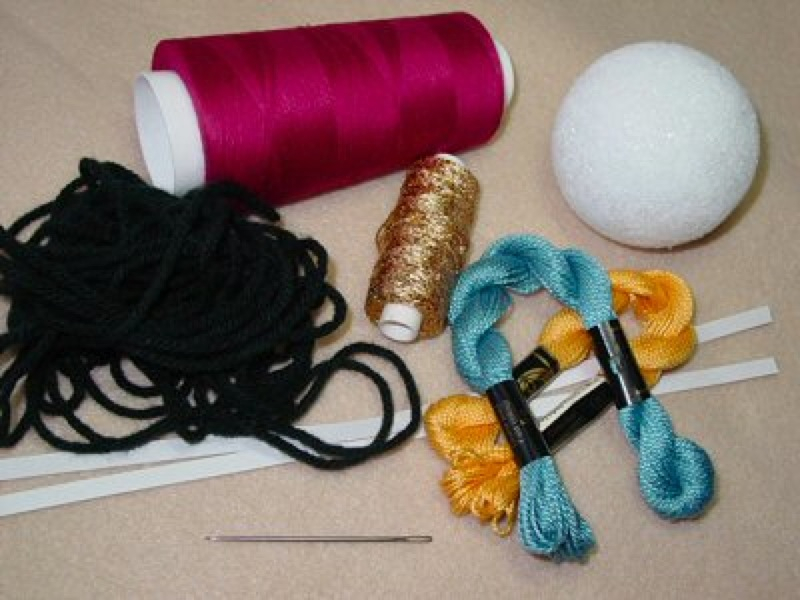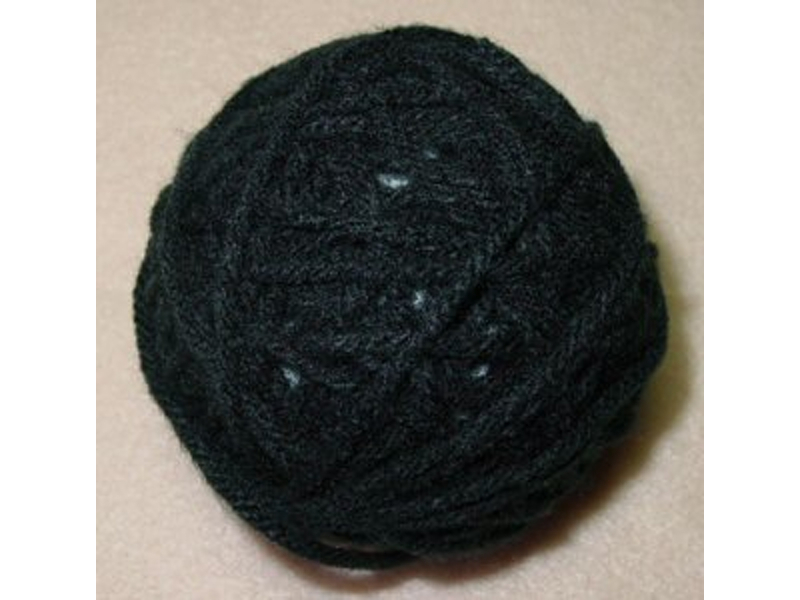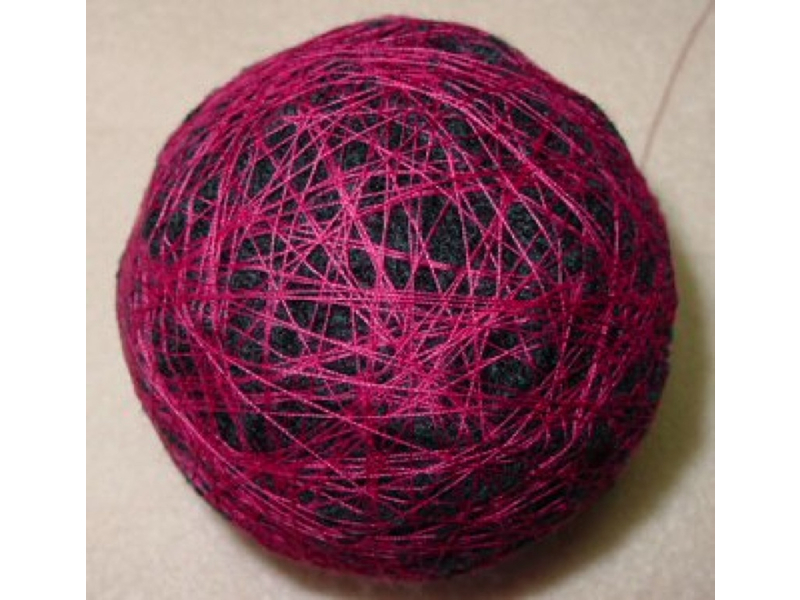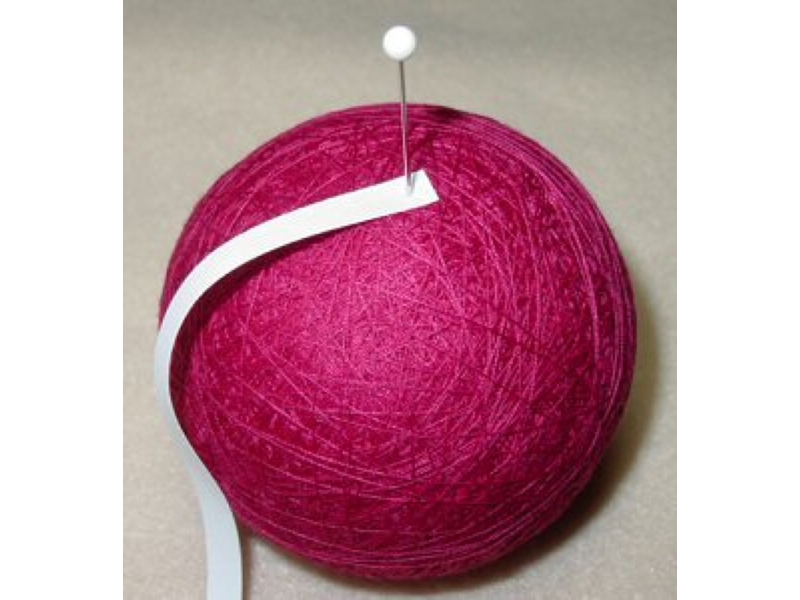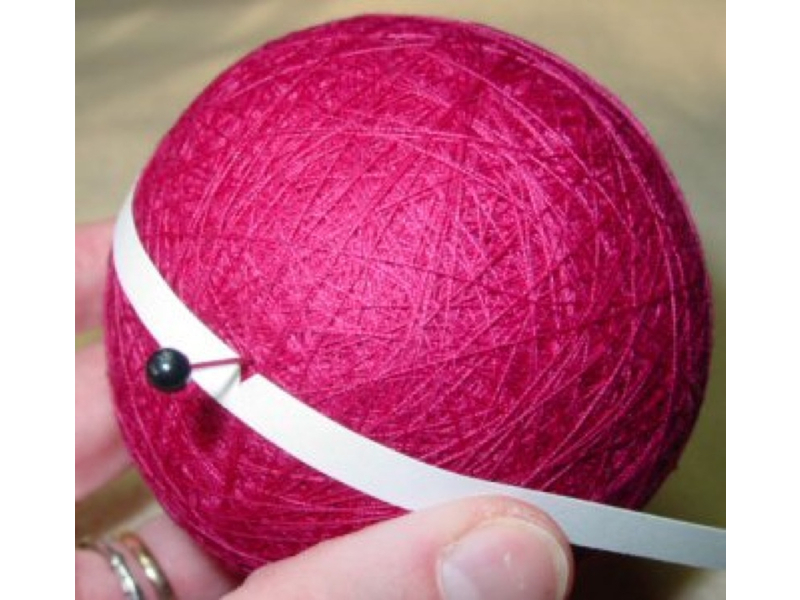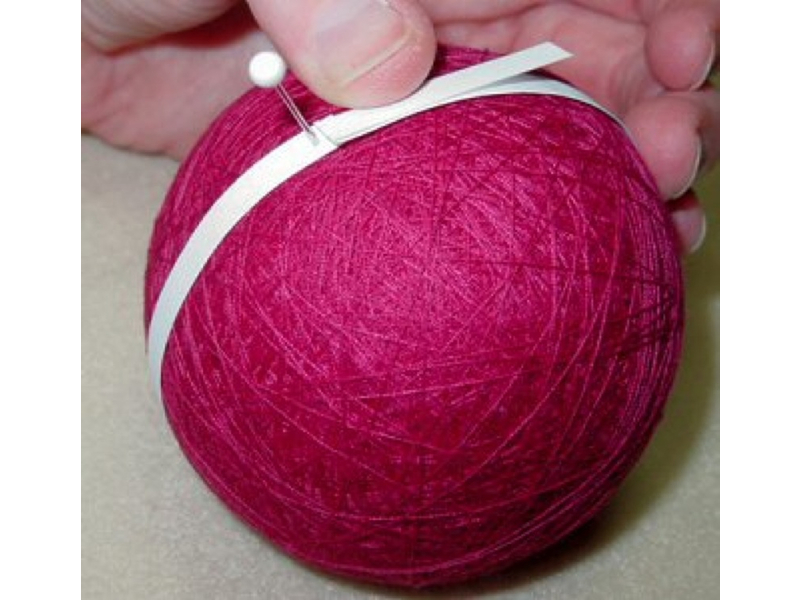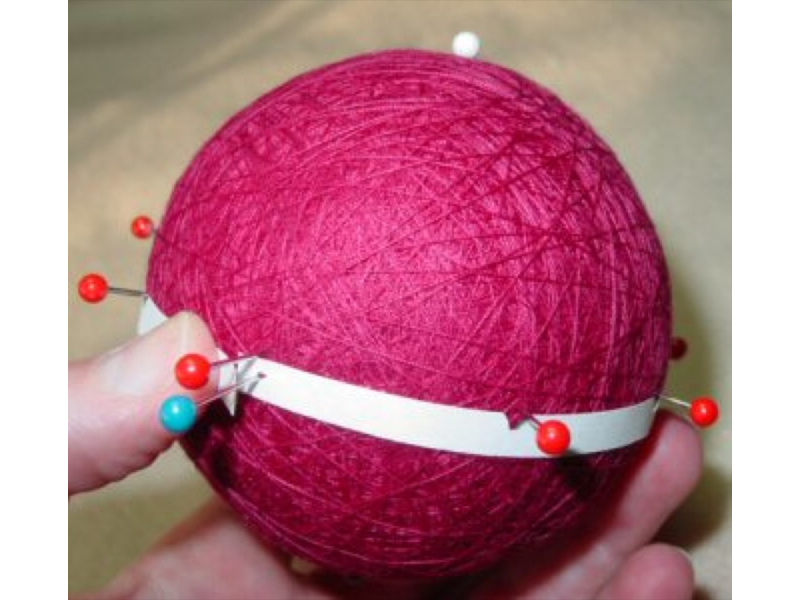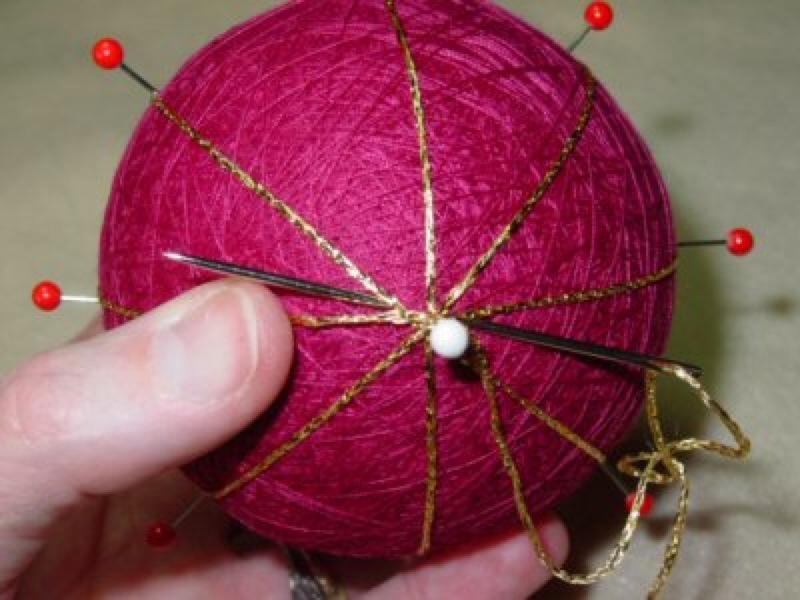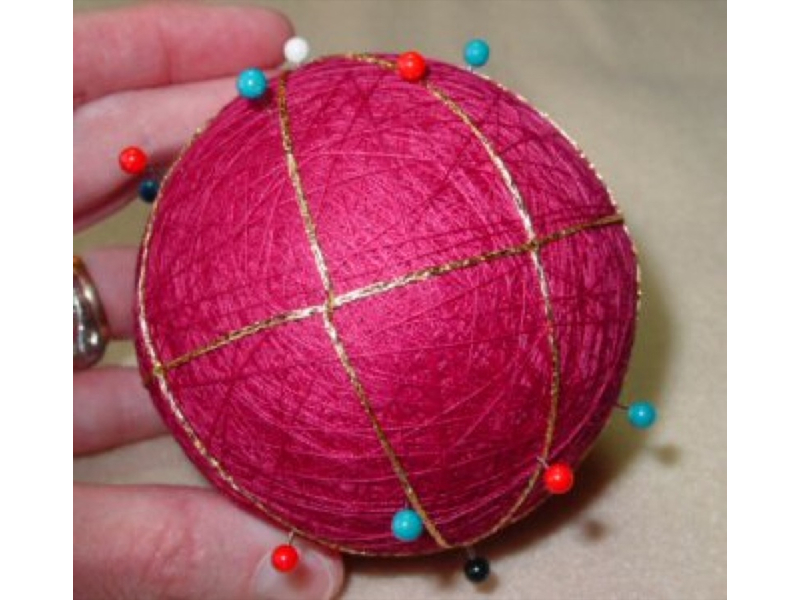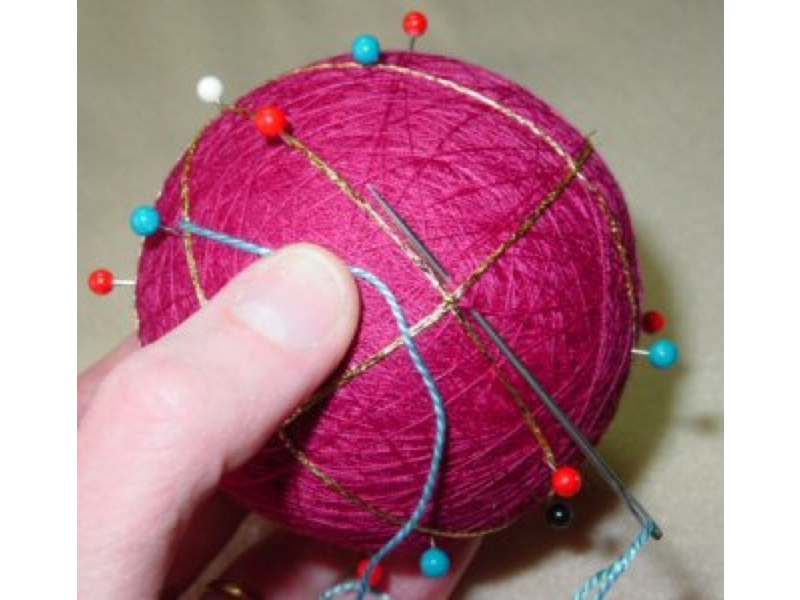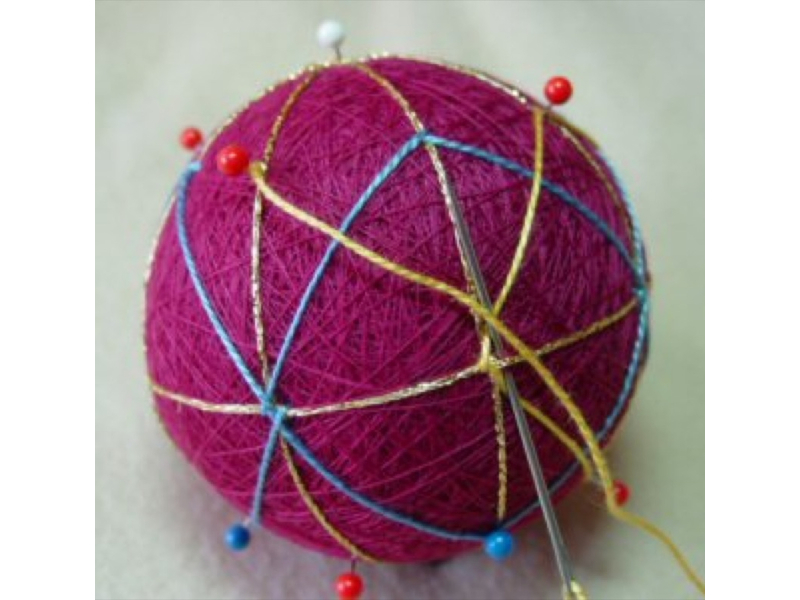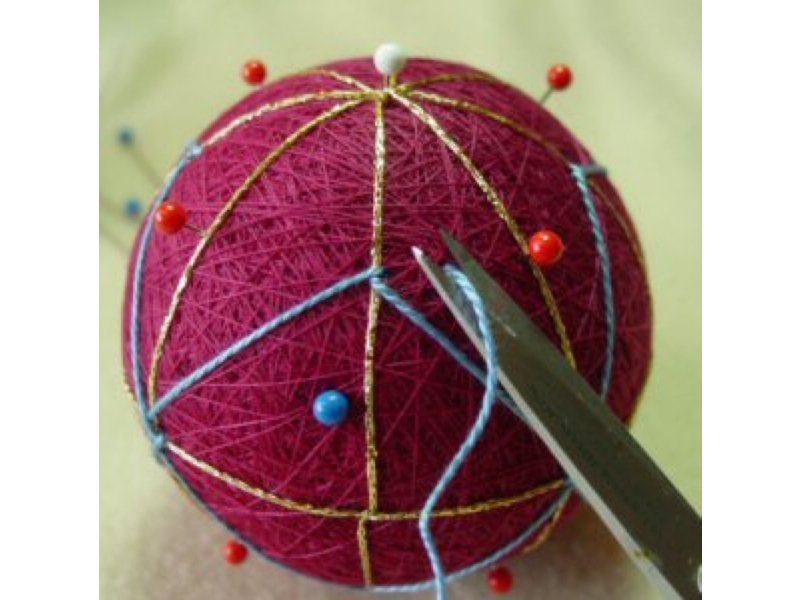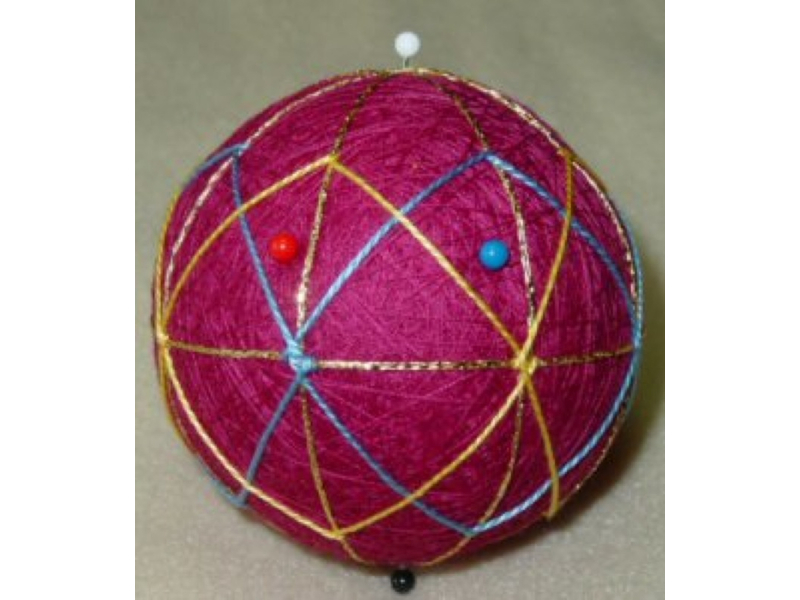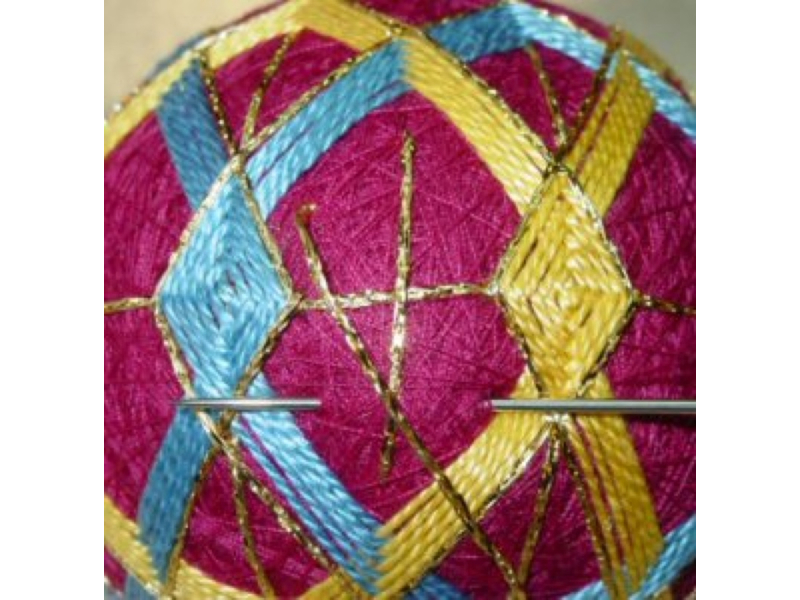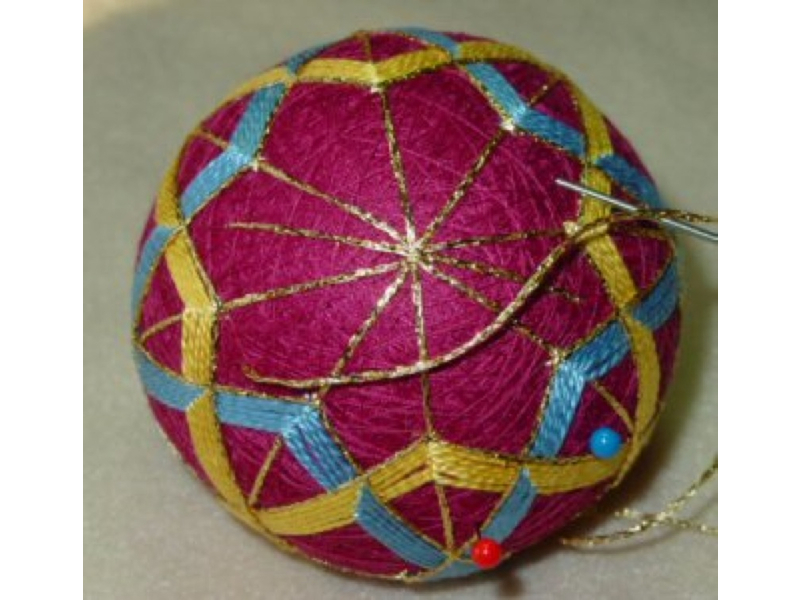Temari is an ancient Japanese folk art dating back more than 500 years. Temari means “hand” (te) “ball” (mari), relating to both making by and playing with the hands. Originally, balls for games and children were made from bits and scraps of kimono, other clothing, or deer hide. Strips of cloth or leather would be tightly wound into a ball and stitched together to hold the shape. Since an item carries not only function but beauty in Japanese culture, the stitching became more and more intricate, leading up to the detailed embroideries seen in both historical and present-day creations. Temari evolved from toy to objet d’art. It is carried on today (with some modern adjustments) as a fiber art; temari are made and collected worldwide.
